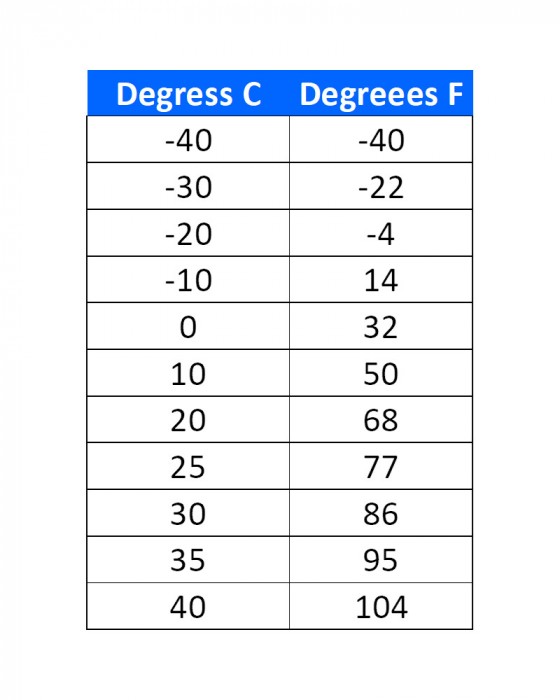Folks,
I was reading BBC’s Science Focus Magazine when I came across a reader’s letter to the editor in the October issue on page 12:
“Reading the Q&A about fusion power (September p77), I was struck by the fact that you gave temperatures in both Celsius and Fahrenheit. I’m pretty sure that all of your readers – even Americans – are familiar with Celsius and metric by now, or is there some benighted corner of the world where these systems are unknown?” -Alan Black
Well, my sense is that in the USA, most people are not familiar enough with Celsius and metric to make the conversions without a chart or app. Most of us don’t “think metric.” Years ago, being an engineer, I felt that I needed to make an effort, if not to think metric at least to get approximations in my head. So, the following are some of the tricks I use.
Room temperature of about 20°C is equal to 68°F. Each 5°C is equal to 9°F. So, 25°C is 77°F or a pleasant day, 30°C is 86°F or a warm day, 35°C is 95°F or a hot day, and 40°C is equal to 104°F, a very hot day.
Going down from 20°C, 15°C is 68°F minus 9°F or 59°F, and so forth. Most of us know that 0°C is 32°F, therefore -5°C is 23°F, etc. See the figure below for some help.

For really cold temperatures, -40°C is -40°F and you can use the 5°C change is = 9°F change for temperatures near -40°C.
Some other approximations are helpful: 16°C is about 61°F, and -11°C is about 11°F.
For much higher temperatures, degrees F is approximately 2 times degrees C. As an example 250°C is close to 500°F (actual 482°F), 2000°C is about 4000°F (actual 3632°F). For values of degrees C above 1000°C, if you subtract 10% of degrees F from itself, it gets you very close to the actual temperature. So, for 2000°C, degrees F is very close to 2 * 2000 = 4000 – 0.1*4000 = 3600°F, where the actual is 3632°F.
On my next post, I will discuss ways to convert metric to British distances and weights.
Best,
Dr. Ron


